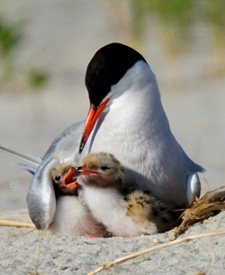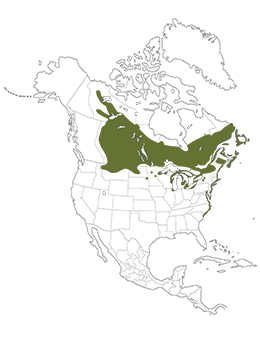Common Tern
Nest structure Plan and Information
Select another species:

Construction difficulty:
moderate
Download Nest Structure Plan
Species in decline
This species is in decline in certain regions. You can put up a nest box to help if you live in the right region and habitat.
- Declining
- Not declining
- Not present
Nesting Habitat
- Lake
- River
- Shore
Attach Nest Box To
- Ground
Known Nesting Period
Not Nesting
Some Nesting Occurrence
Nesting in Most of Range
JAN
FEB
MAR
APR
MAY
JUN
JUL
AUG
SEP
OCT
NOV
DEC
Nest Box Placement
Nest Height:
0ft
ft
0 feet
Minimum Spacing:
1.5 feet
Facing:
South
Helpful Tips
- Many seabird colonies are already managed by a local wildlife authority; often the land surrounding the colony is protected and public access is restricted. We strongly encourage that you contact your local wildlife agency before entering a colony and/or placing shelters.
- Common Terns are a colony-nesting species. Therefore, shelters may not attract birds to an area that currently does not have nesting terns; rather, they provide shade and protection from predators for chicks on the open expanse of a beach. Beach-nesting birds are especially sensitive to disturbance, so it is best to place these shelters in known breeding colonies before the birds return for the breeding season.
- When placing the shelters in a colony, it is important that the long wall face south in order to create the shade spots that the birds like to use.
- If space is limited (e.g., in colonies on floating barges or channel markers), you can make the south wall shorter (32”) to accommodate more shelters in a restricted space.
- Plan to make multiple shelters (5 or 6 to start) to place throughout the colony, especially in sparsely vegetated areas. Don't cluster them too closely together - about a foot and a half apart works well.
- This shelter is meant to protect chicks from avian predators such as owls and falcons, which commonly prey on tern colonies throughout their breeding range. However, along the Atlantic coast from Massachusetts to South Carolina, Common Terns overlap with ghost crabs. Ghost crabs also like chick shelters and may prey upon small nestlings. Take care not to site shelters near ghost crab burrows. If ghost crabs become a problem, consider switching to the open A-frame style shelters. Managers may need to weigh the risks and choose the most appropriate style for the most common predators in the area.
 Source:
Source: 